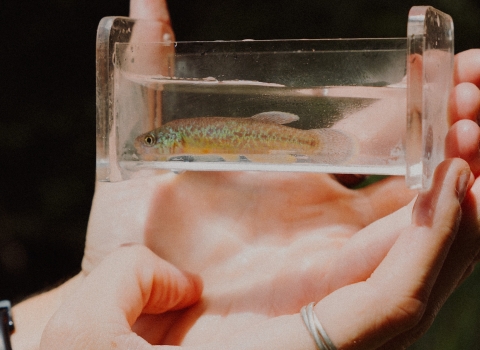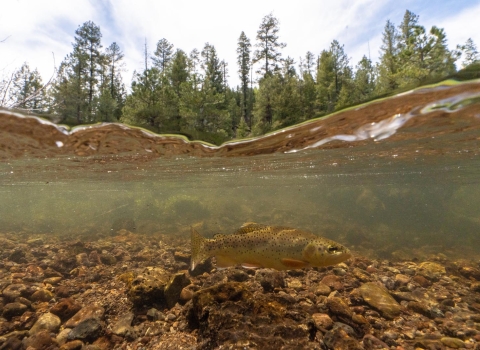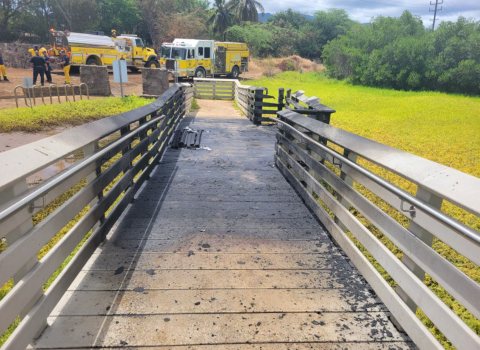The U.S. Fish and Wildlife Service announced today that it has completed a status review of the Coleman's coralroot and concluded it does not warrant protection under the Endangered Species Act. Coleman's coralroot (Hexalectris colemanii), a member of the orchid family, occurs in oak woodlands in southeastern Arizona and southwestern New Mexico.
The status review was undertaken after the Center for Biological Diversity petitioned the Service to list the Coleman's coralroot as threatened or endangered in 2010.
In 2010, Coleman's coralroot was known from only three sites in the Santa Rita and Dragoon mountains of southern Arizona. Extensive survey efforts since 2010 have dramatically increased the number of known and potential colonies of Coleman’s coralroot. As of July 2013, the species is known from 22 sites across seven mountain ranges on Federal lands managed by the Coronado National Forest and Tribal lands owned by the Tohono O’odham Nation.
Potential mining activities may affect five of 22 known Coleman’s coralroot colonies, including the anticipated extirpation of two colonies within the footprint of the proposed Rosemont Copper Mine. The status assessment concludes that the loss of this portion of the range would not place the entire species in danger of extinction and concluded that the affected populations do not constitute a significant portion of the species’ range.
The status assessment considered other potential threats, including plant collection and trade, off-road vehicles, livestock grazing, herbivory, disease, climate change climate change
Climate change includes both global warming driven by human-induced emissions of greenhouse gases and the resulting large-scale shifts in weather patterns. Though there have been previous periods of climatic change, since the mid-20th century humans have had an unprecedented impact on Earth's climate system and caused change on a global scale.
Learn more about climate change and drought, and concluded that the best available information indicates that these and other natural or manmade factors are not threats to the continued existence of the species now or within the foreseeable future. Therefore, listing Coleman’s coralroot as threatened or endangered under the Endangered Species Act is not warranted at this time.
Coleman’s coralroot is a perennial herb with 18- to 22-inch stems and eight-inch clusters of small whitish or creamy-pink flowers that are pale brown at the tips and with bands of magenta or maroon. Orchids, such as Coleman's coralroot, may be found either as individual plants or as part of a colony consisting of relatively small number of individual orchids to many hundred individual plants. Coleman’s coralroot grows in moderate shade in oak woodland canyons, hills, and drainages southeastern Arizona and southwestern New Mexico. It was originally believed to be a variety of a larger taxon of coralroots; since 2010 it has been recognized as a distinct species.
U.S. Fish and Wildlife Service
News Release
Arizona Ecological Services Field Office
2321 W. Royal Palm Road, Suite 103
Phoenix, Arizona 85021
602/242-0210
602/242-2513 (Fax)
A copy of the 12-month finding and is available on the Internet at http://www.fws.gov/southwest/es/arizona/
or by contacting Arizona Ecological Services at (602) 242-0210.
The mission of the U.S. Fish and Wildlife Service is working with others to conserve, protect, and
enhance fish, wildlife, plants, and their habitats for the continuing benefit of the American people. We
are both a leader and trusted partner in fish and wildlife conservation, known for our scientific
excellence, stewardship of lands and natural resources, dedicated professionals, and commitment to
public service. For more information on our work and the people who make it happen, visit
www.fws.gov. Connect with our Facebook page at www.facebook.com/usfws, follow our tweets at
www.twitter.com/usfwshq, watch our YouTube Channel at http://www.youtube.com/usfws and download
photos from our Flickr page at http://www.flickr.com/photos/usfwshq.
http://www.fws.gov/southwest/es/arizona/
Note to editors: Photographs are available by contacting Jeff Humphrey at 602-242-0210 x222
(jeff_humphrey@fws.gov) or visiting http://www.fws.gov/southwest/es/arizona/Plants.htm .
Press Release
SERVICE DETERMINES COLEMAN’S CORALROOT DOES NOT WARRANT ENDANGERED SPECIES ACT PROTECTION



